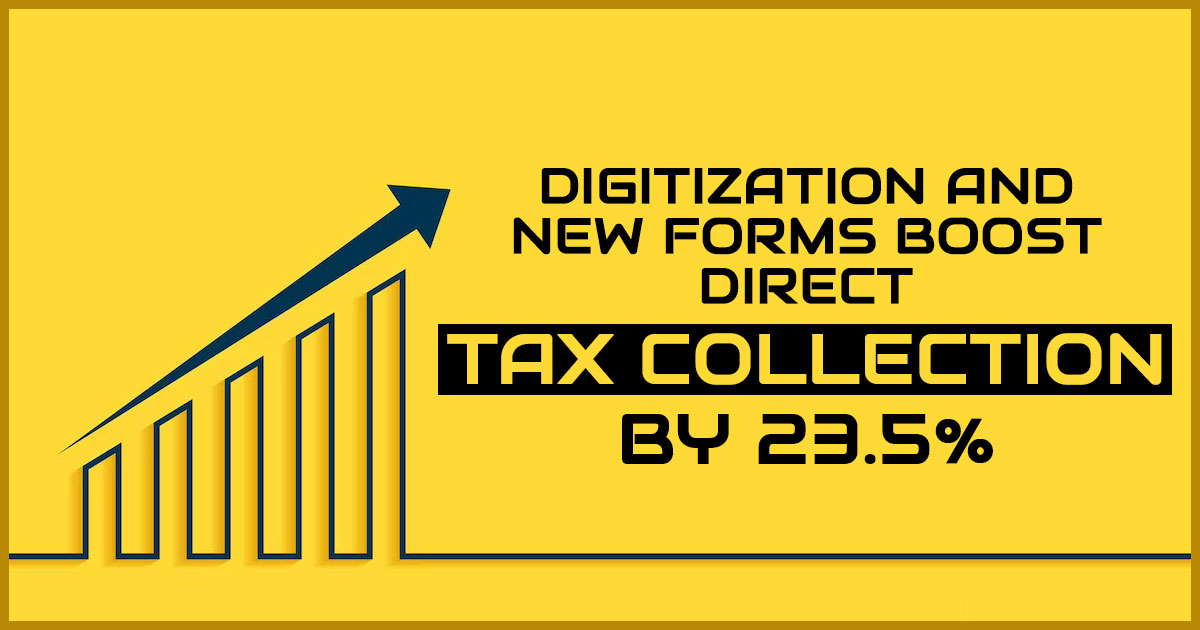
The government has gathered Rs 8.65 trillion in direct taxes as of September 16, after accounting for tax refunds. This amount surpasses more than half of its yearly goal, as reported by the Central Board of Direct Taxes (CBDT).
The direct taxes collected up to this point, which also include the initial two instalments of advance tax payments, indicate a 23.5% increase compared to the tax revenues from the same sources in the previous year, as confirmed by the CBDT.
For the current fiscal year, the government had anticipated a 10.5% annual growth in direct tax collection, setting a target of Rs 18.2 trillion.
Following the reimbursement of refunds, the tax authority has gathered Rs 4.16 trillion in corporate tax revenue, accounting for 45% of the annual target, and Rs 4.47 trillion in personal income tax revenue, which constitutes half of the yearly target. The personal income tax collections encompass the securities transaction tax imposed on the sale of listed equity shares.
Even if the government’s full-year estimates for tax collection growth look to be far off, analysts predict that it will eventually catch up to them.
The tax collection for the whole year seems to be aligned with the budget approximations. According to the projections of the budget, the collection of tax growth in the initial quarters is anticipated to be formalized by the finish of the fiscal. Given that the nominal impact on GDP (gross domestic product) growth rate and tax collection data are related.
In comparison to the same quarter last year, India’s nominal GDP growth was down by 8% in the June quarter. If El Nino doesn’t have a significant negative effect, India’s GDP is anticipated to increase in real terms by almost as much as the officially estimated 6.5% this fiscal.
Recent enhancements in the digitization of tax administration, data gathering from various channels, and offering pre-filled tax returns based on existing taxpayer information have significantly bolstered the Centre’s direct tax collections. This approach aids in capturing additional income sources that taxpayers might overlook when filing their returns.
Taxes to be deducted at source (TDS) by entities when making payments to people who form part of their income is another important method of revenue collection that the tax department has expanded the use of.
This assists in tracking transactions to make sure that taxation is not avoided while also collecting a portion of the taxes that must be paid in advance by people receiving various payments.
The data from the Central Board of Direct Taxes (CBDT) reveals that Tax Deducted at Source (TDS) amounting to Rs 5.19 trillion has played a significant role in the total direct tax collection for the current year. Advance tax payments, which involve paying taxes in four instalments throughout the year, have contributed Rs 3.5 trillion as of September 16th, with two instalments already accounted for.
Furthermore, the tax authority has issued refunds totalling Rs 1.22 trillion by September 16th. The gross direct tax receipts, before refunds, have reached Rs 9.87 trillion. The government has set a target of collecting Rs 33.6 trillion in gross taxes for the year, with more than half of this amount expected to come from direct taxes.
On the indirect tax front, the government’s goods and services tax (GST) collections have also shown robust growth. Data from the Controller General of Accounts (CGA) indicates that by the end of July, the government’s fiscal deficit, which represents the difference between receipts and spending covered through borrowing, was only a third of the Rs 17.8 trillion budgeted for the entire year. This suggests that the government’s budget management is on track.
The strong tax receipts will relieve the pressure on the government to achieve its Rs 51,000 crore target for selling stakes in state-run companies this year.









